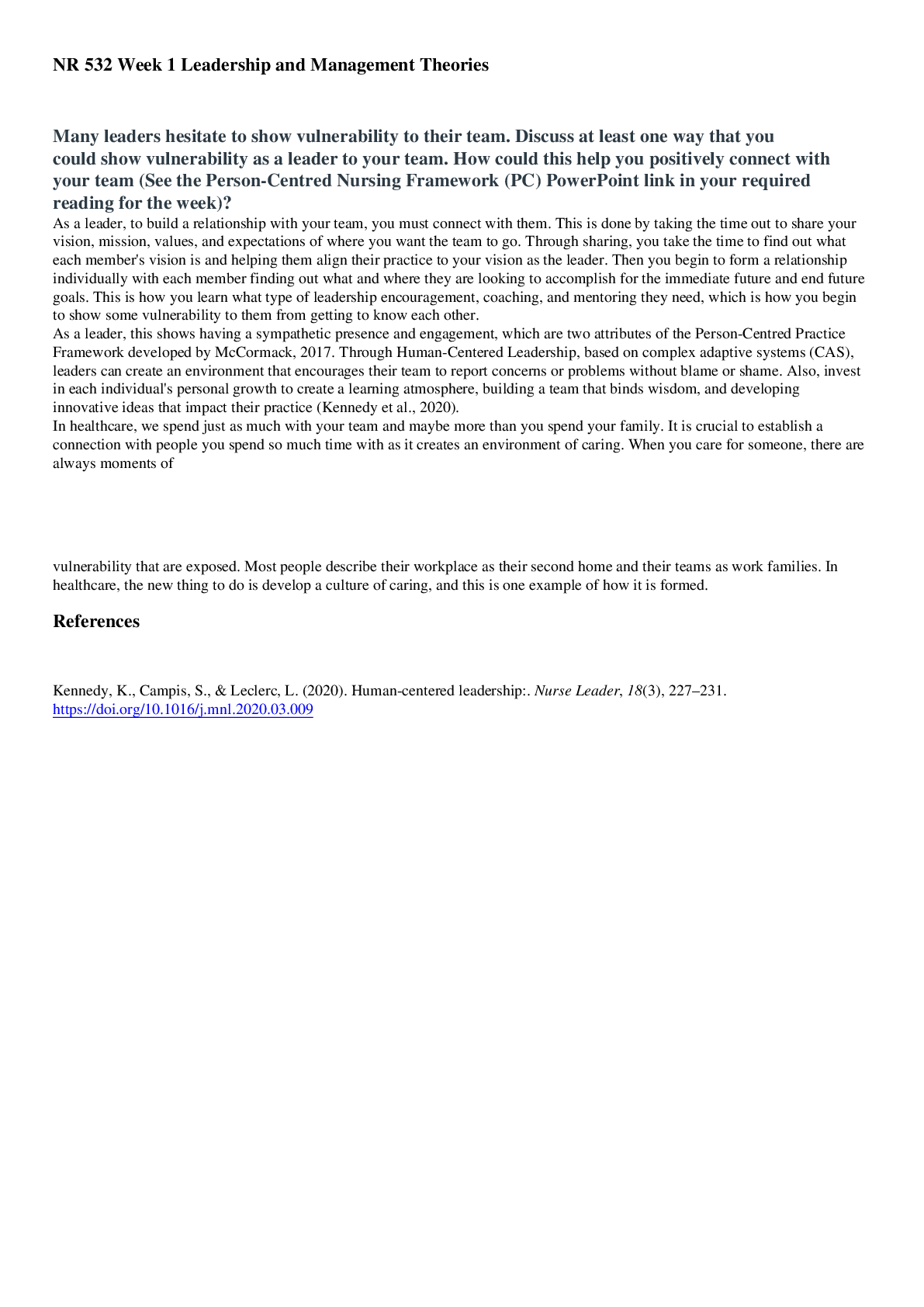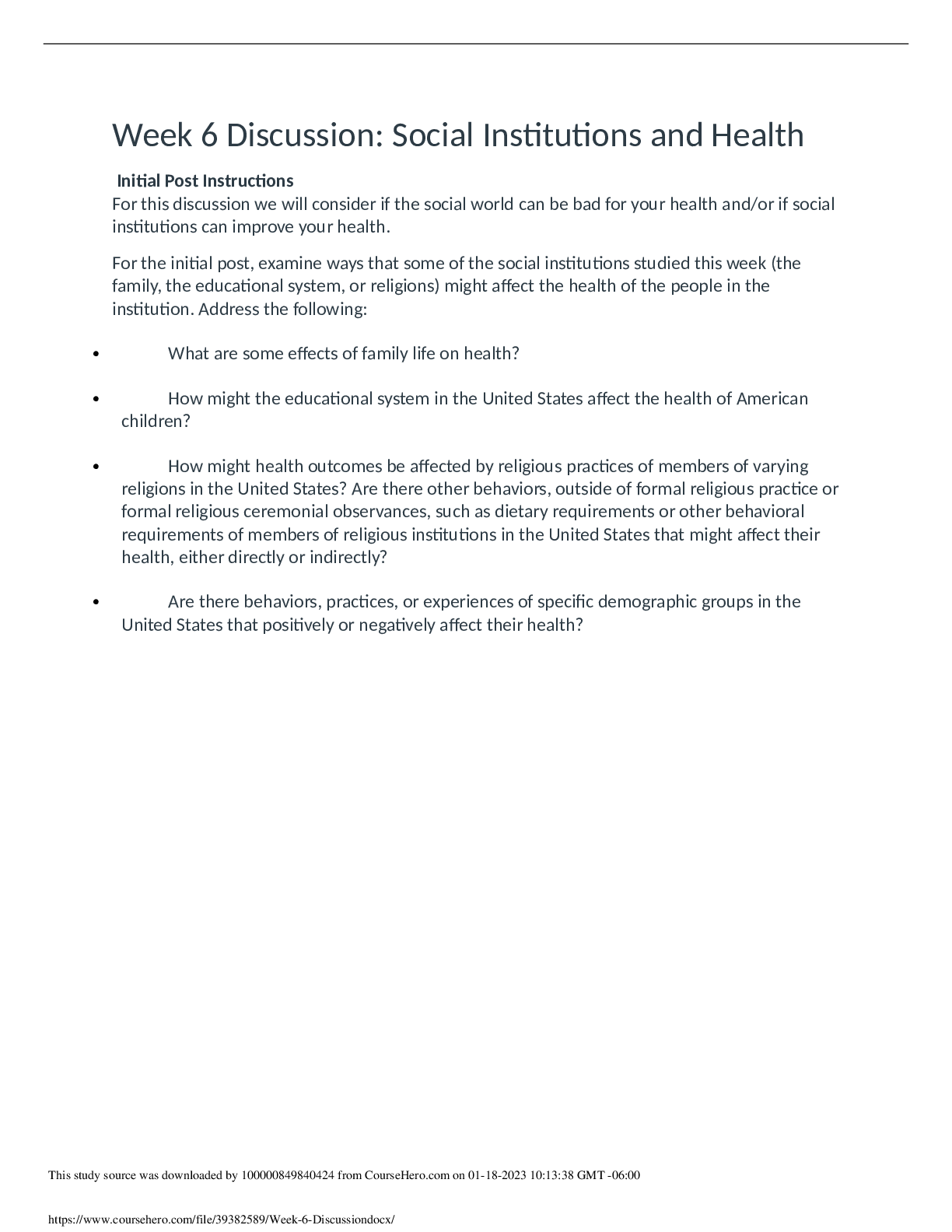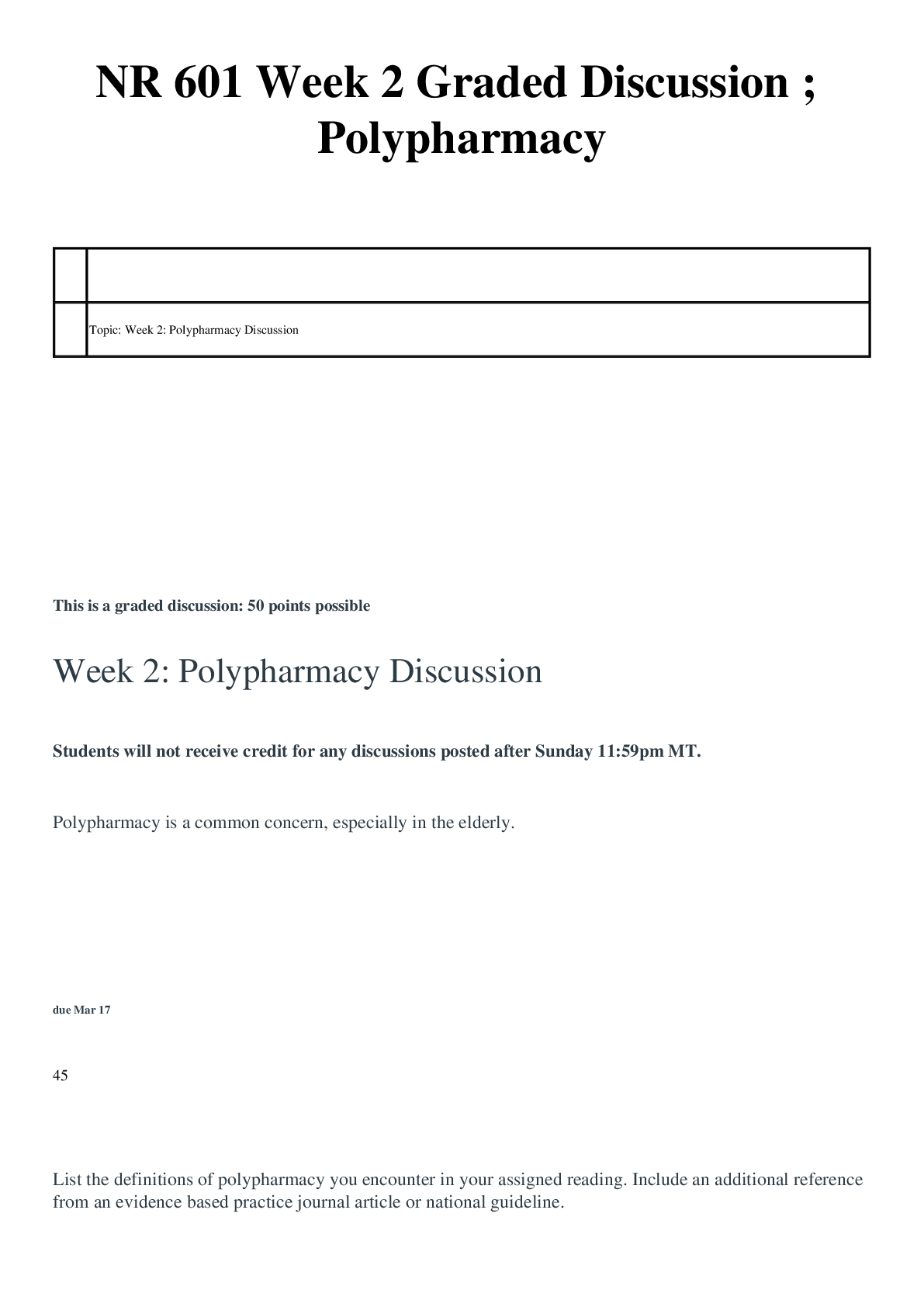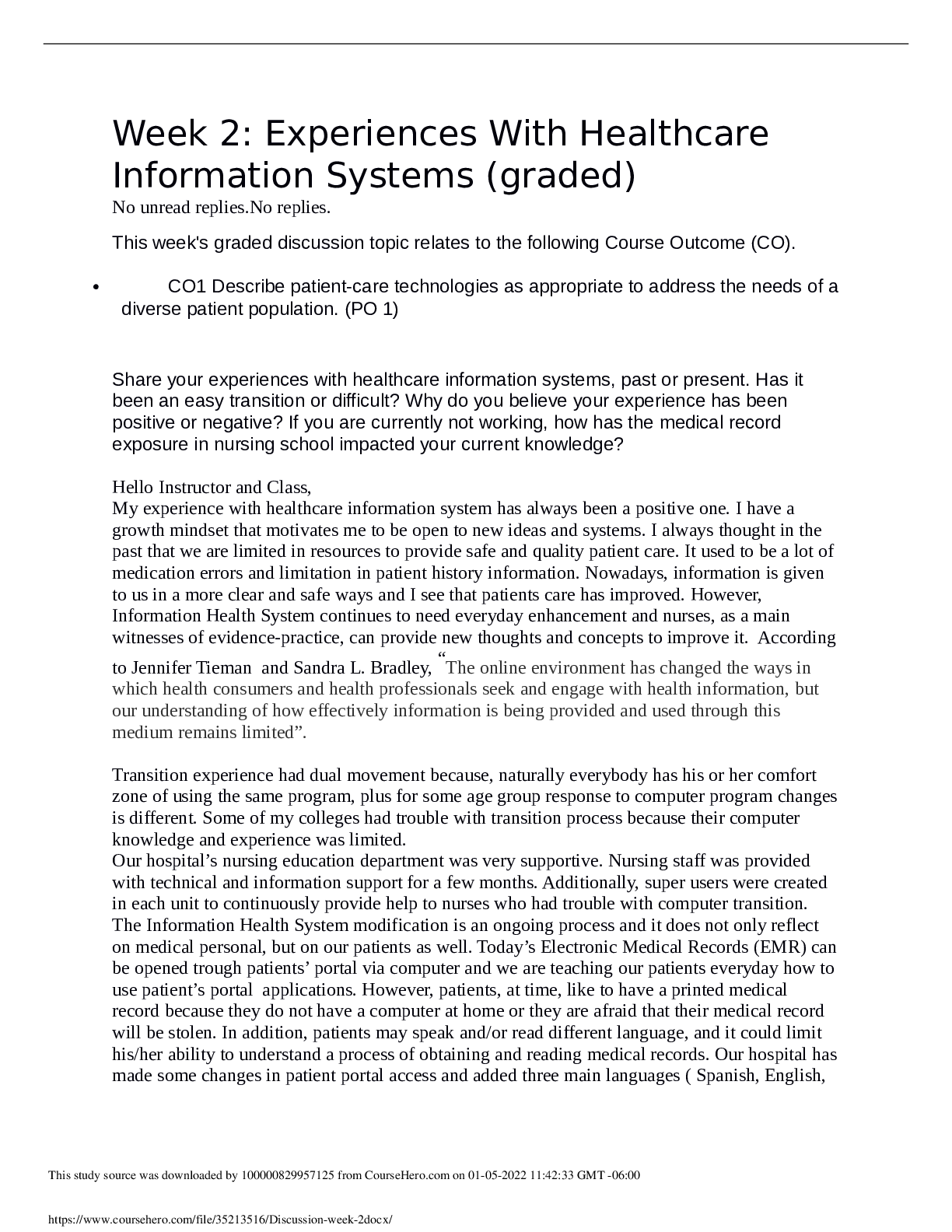*NURSING > DISCUSSION POST > NR 532 Week 2 Graded Discussion 1 – Patient Care Delivery Systems 2021-GRADED A+ (All)
NR 532 Week 2 Graded Discussion 1 – Patient Care Delivery Systems 2021-GRADED A+
Document Content and Description Below
In your reading this week, five traditional patient-care-delivery systems were discussed. Share which delivery method you would utilize if you were the nurse executive at a healthcare organization a... nd explain your rationale. As the nurse executive at a healthcare organization, my first choice for a patient care delivery system would be functional care. In a functional care system, the registered nurse (RN) is ultimately responsible for the care of their assigned patients, however they can delegate many tasks to others. For example, the RN is responsible for assessments, plan of care, medication administration, and overall monitoring of the patient. The RN would delegate to the assigned certified nurse aid (CNA) responsibilities of vital signs, activities of daily living, blood glucose checks, repositioning, and so on. Other healthcare team members would be responsible for tasks that pertained to their expertise, like if a patient had a wound, the wound care nurse would direct that care, perhaps with the need to delegate tasks to the RN in between the times he/she was able to see the patient. The primary reason I would select this system is because it allows healthcare associates to function at the top of their license or profession. It also helps address the nursing shortage issues by using multiple levels or dividing up the workload into tasks that can be performed by other healthcare personnel. One risk of this patient care delivery system is compromising the quality and safety of the patient care by dividing up the tasks. A study conducted in China to evaluate the nurse’s role in providing direct patient care revealed that the nurse is a key element to the equation to produce high quality, safe care and desired outcomes (Jiang, Li, Ma, & Gu, 2015). With this, it is important that all disciplines and healthcare team members are on the same page. This can be accomplished through multi-disciplinary bedside rounds, where the RN or provider lead the discussion with the patient to ensure that the patient is part of their care plan and all are on the same page and hearing the same information. To decrease the confusion to the patient as to who is who, each healthcare role would be identified by a different color of scrub. Jiang, H., Li, H., Ma, L., & Gu, Y. (2015). Nurses’ roles in direct nursing care delivery in China. Applied Nursing Research, 28(2), 132-136. doi: http://dx.doi.org.chamberlainuniversity.idm.oclc.org/10.1016/j.apnr.2014.09.003 Lisa, I, too, chose the functional care model. In my nursing experience, it is the most familiar and I truly feel the best patient experience, with the right people and leadership, can be created. It takes a lot of work and patience, however. The nursing shortage is universal and we must find a model that will work, depending on the environment and patient care needs, that will ultimately produce the desired outcomes and meet the goals of the patient and organization. As a unit manager, I am not involved in the patient assignments and am fairly removed from the bedside. At my organization, we have an assistant nurse manager (ANM), registered nurse (RN), and certified nurse aids (CNAs) that make up the functional model. My biggest issue is CNA turnover. I usually have new CNAs training newer CNAs, so it is a pretty painful and lengthy timeframe to get the [Show More]
Last updated: 2 years ago
Preview 1 out of 4 pages

Buy this document to get the full access instantly
Instant Download Access after purchase
Buy NowInstant download
We Accept:

Reviews( 0 )
$9.00
Can't find what you want? Try our AI powered Search
Document information
Connected school, study & course
About the document
Uploaded On
Aug 02, 2021
Number of pages
4
Written in
Additional information
This document has been written for:
Uploaded
Aug 02, 2021
Downloads
0
Views
97


U.png)























